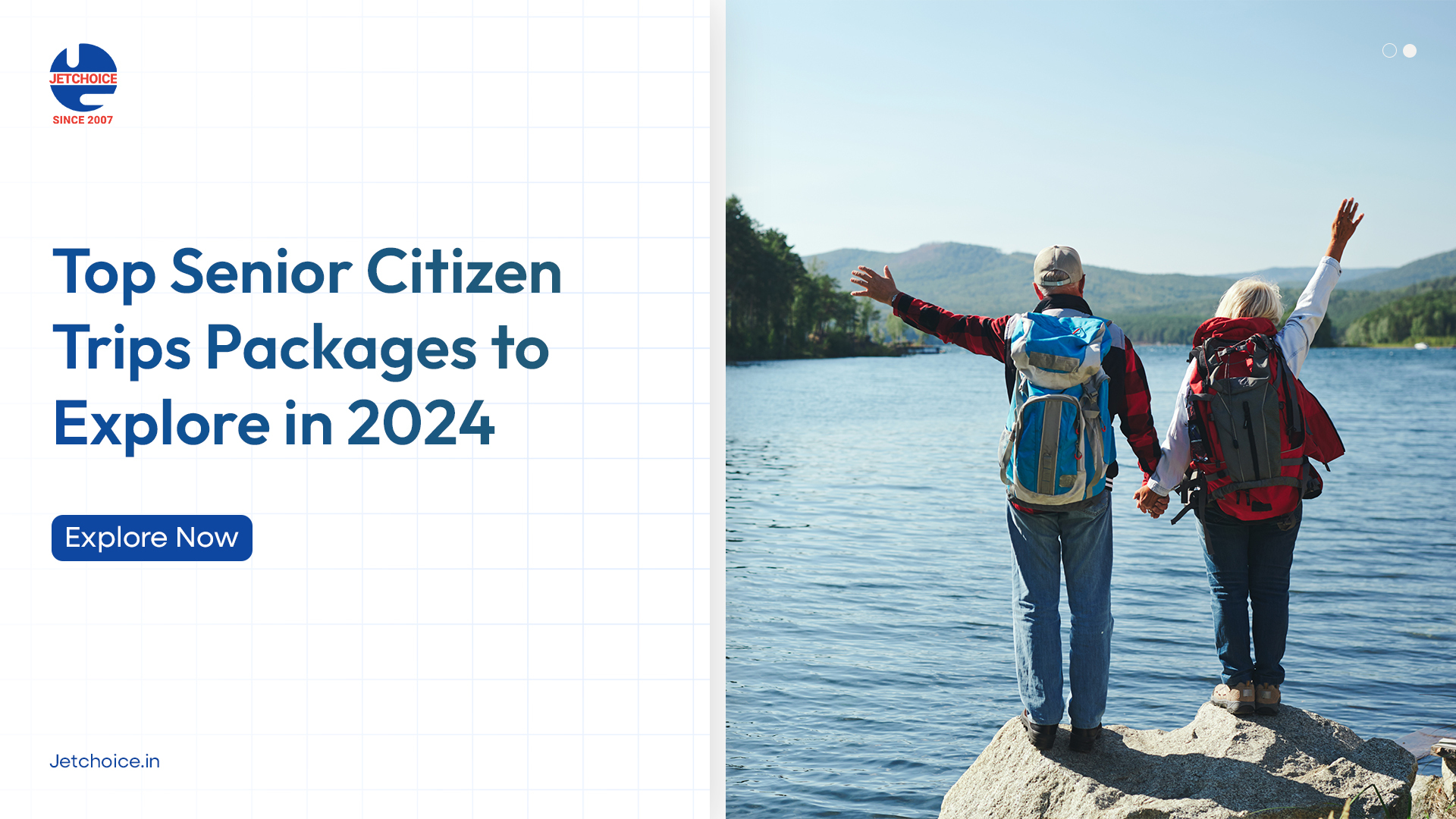Senior citizen trips offer a unique opportunity to explore the world, relax, and create lasting memories. Whether you dream of adventurous excursions or tranquil escapes, planning a fulfilling journey tailored to your needs and preferences is key. This guide provides comprehensive information to help you navigate the process, from selecting the ideal trip type to managing your budget and ensuring your safety and comfort.
From meticulously curated itineraries to insightful tips on finding the best travel deals and accommodation, we cover all aspects of planning a memorable senior citizen trip. We delve into health considerations, transportation options, and ways to maximize your enjoyment while minimizing potential risks, ensuring a smooth and enriching travel experience.
Types of Senior Citizen Trips
Choosing the right travel experience is crucial for senior citizens, ensuring both enjoyment and comfort. Different trip types cater to diverse preferences and physical capabilities, allowing for memorable and fulfilling adventures. Careful consideration of individual needs and preferences is paramount in selecting the ideal trip.
Adventure Tours for Seniors
Adventure travel doesn’t have to mean extreme challenges. Many companies offer senior-focused adventure tours that prioritize safety and manageable activities. These trips often involve moderate physical activity, stunning natural scenery, and opportunities for exploration.
| Destination | Trip Type | Activities | Special Considerations |
|---|---|---|---|
| National Parks of the American Southwest (e.g., Zion, Bryce Canyon) | Adventure Tour (Moderate) | Guided hikes on well-maintained trails, scenic drives, ranger talks, photography excursions. | Good walking shoes are essential. Some hikes may involve gentle inclines. Consider booking a tour with accessible transportation options. |
| Costa Rica Rainforest | Adventure Tour (Gentle) | Bird watching, nature walks on easy trails, boat trips on calm rivers, visits to wildlife sanctuaries. | Moderate level of fitness required. Trips should be chosen based on individual mobility. Consider the climate and pack accordingly. |
The unique features of adventure tours for seniors include experiencing nature’s beauty in a safe and guided environment, fostering a sense of accomplishment, and encouraging social interaction with fellow travelers. Physical demands are generally moderate, and accessibility considerations vary widely depending on the specific tour and destination. Always check the tour operator’s details regarding accessibility features and support available.
Relaxing Cruises for Seniors
Cruises offer a relaxing and convenient way to see multiple destinations without the hassle of packing and unpacking frequently. Many cruise lines cater specifically to senior travelers, providing amenities and services tailored to their needs.
| Destination | Trip Type | Activities | Special Considerations |
|---|---|---|---|
| Mediterranean Cruise | Relaxing Cruise | Onboard entertainment, shore excursions (optional), swimming, spa treatments, dining experiences. | Accessibility features vary between cruise lines and ships. Book a cabin with easy access and consider mobility aids if needed. |
| Alaskan Cruise | Relaxing Cruise | Scenic cruising, wildlife viewing, onboard lectures and shows, onboard amenities. | Sea days can be long. Consider booking shore excursions that match your fitness level. Pack layers for varying weather conditions. |
Relaxing cruises offer the benefits of stress-free travel, a wide range of onboard amenities, and the opportunity to visit multiple destinations without the fatigue of frequent travel. Physical demands are minimal, with most activities optional. However, accessibility varies significantly between cruise lines and ships, so careful planning and research are crucial.
Cultural Excursions for Seniors
Cultural excursions focus on immersing travelers in the history, art, and traditions of a specific region or country. These trips often involve guided tours of historical sites, museums, and local markets, providing enriching and educational experiences.
| Destination | Trip Type | Activities | Special Considerations |
|---|---|---|---|
| Italy (Rome, Florence, Venice) | Cultural Excursion | Guided tours of historical sites, visits to museums and art galleries, cooking classes, wine tasting. | Extensive walking is involved. Consider using public transportation or private tours with accessible vehicles. |
| Japan (Kyoto, Tokyo) | Cultural Excursion | Temple visits, traditional tea ceremonies, exploring gardens, attending cultural performances. | Some temples may have stairs. Consider the pace of the tour and choose one that suits your fitness level. |
Cultural excursions provide intellectual stimulation, exposure to different cultures, and opportunities for personal growth. Physical demands vary greatly depending on the destination and itinerary. Accessibility considerations include the availability of accessible transportation and the physical accessibility of historical sites and museums.
Wellness Retreats for Seniors
Wellness retreats prioritize relaxation, rejuvenation, and improving overall well-being. These trips often incorporate activities such as yoga, meditation, spa treatments, and healthy eating.
| Destination | Trip Type | Activities | Special Considerations |
|---|---|---|---|
| Sedona, Arizona | Wellness Retreat | Yoga classes, meditation sessions, hiking (optional), spa treatments, healthy meals. | Moderate physical activity is possible, but many retreats offer modifications for different fitness levels. |
| Costa Rica (various locations) | Wellness Retreat | Yoga and meditation, nature walks, spa treatments, healthy cuisine, opportunities for relaxation and mindfulness. | Consider the climate and choose a location and activities that match your physical capabilities. |
Wellness retreats offer opportunities for stress reduction, improved physical and mental health, and personal growth. Physical demands can be minimal or moderate, depending on the specific activities offered. Accessibility should be a key consideration when choosing a wellness retreat, ensuring that facilities and activities are suitable for individual needs.
Planning and Booking Senior Citizen Trips
Planning a memorable and safe trip for senior citizens requires careful consideration of various factors. This section provides a step-by-step guide to ensure a smooth and enjoyable travel experience for older adults, encompassing budgeting, insurance, and visa requirements. Thorough preparation minimizes stress and maximizes the enjoyment of the journey.
Step-by-Step Guide to Planning a Senior Citizen Trip
A well-structured plan is crucial for a successful senior citizen trip. The following steps offer a comprehensive approach to planning, ensuring a smooth and enjoyable experience for all involved.
- Determine Destination and Trip Type: Consider the senior’s physical capabilities and interests when choosing a destination. A relaxing cruise might be preferable to a backpacking adventure. Research potential destinations, considering accessibility, climate, and activities available. Examples include relaxing beach resorts, culturally rich cities with easy navigation, or scenic train journeys.
- Set a Realistic Budget: Factor in all potential costs, including flights, accommodation, activities, meals, transportation, and incidentals. Consider using budgeting tools or spreadsheets to track expenses. A realistic budget prevents unexpected financial strain during and after the trip. For example, a two-week trip to Europe might cost significantly more than a week-long stay in a domestic resort.
- Book Flights and Accommodation: Choose airlines and accommodations that cater to senior travelers’ needs. Look for options with accessible rooms, comfortable seating, and assistance services. Booking in advance often secures better deals and preferred options. Websites that offer senior discounts should be explored.
- Secure Comprehensive Travel Insurance: Travel insurance is essential for senior citizens, covering medical emergencies, trip cancellations, and lost luggage. Ensure the policy covers pre-existing medical conditions and offers adequate medical evacuation coverage. Compare policies from different providers to find the best coverage at a reasonable price.
- Check Visa and Passport Requirements: Verify visa requirements well in advance of travel. Ensure passports are valid for at least six months beyond the intended travel dates. Allow ample time for visa applications to avoid delays. Resources such as government websites and embassies provide accurate and up-to-date information.
- Plan Activities and Itineraries: Create a flexible itinerary that accounts for the senior’s physical limitations and preferences. Include ample rest time and avoid over-scheduling. Research accessible transportation options and consider pre-booking tours and activities.
- Pack Appropriately: Pack light but ensure all necessary medications, comfortable clothing, and essential items are included. Consider using packing cubes to organize luggage and make it easier to manage. A detailed packing list is helpful to avoid forgetting important items.
- Inform Relevant Parties: Inform family members, friends, or healthcare providers of the travel plans, including the itinerary and contact information. This ensures someone is aware of the senior’s whereabouts and can be contacted in case of an emergency.
Resources for Finding Reputable Senior Travel Agencies
Several resources can assist in locating reputable travel agencies specializing in senior travel. These agencies offer tailored itineraries and services catering to the specific needs and preferences of older adults.
- Online Directories: Websites specializing in travel reviews and ratings often categorize agencies by specialization, including senior travel. These sites allow for comparison based on customer feedback and service offerings.
- Travel Associations: Professional travel associations may maintain lists of accredited agencies specializing in senior travel. These associations often have vetting processes, ensuring a level of quality and reliability.
- Word-of-Mouth Recommendations: Seeking recommendations from friends, family, or senior centers can provide valuable insights into the experiences of other senior travelers and identify reliable agencies.
Comparison of Booking Platforms for Senior Travelers
Different booking platforms offer varying features and suitability for senior travelers. Choosing the right platform depends on individual needs and preferences.
| Booking Platform | Strengths | Weaknesses | Suitability for Seniors |
|---|---|---|---|
| Traditional Travel Agencies | Personalized service, expert advice, comprehensive packages | Potentially higher cost, less flexibility | Highly suitable for those who value personalized service and assistance |
| Online Travel Agencies (OTAs) | Wide selection, competitive pricing, easy comparison | Less personal interaction, potential for hidden fees | Suitable for tech-savvy seniors who are comfortable booking independently |
| Specialized Senior Travel Websites | Tailored itineraries, accessible options, senior-specific services | Limited selection compared to OTAs | Best for seniors seeking trips designed for their needs and preferences |
Health and Safety Considerations
Planning a senior citizen trip requires careful consideration of health and safety. The goal is to ensure a comfortable and enjoyable experience while mitigating potential risks associated with travel, particularly for older adults who may have pre-existing health conditions. This section outlines key health and safety considerations to help you plan a secure and worry-free trip.
Potential Health Risks and Mitigation Strategies
Several health concerns can arise during senior travel. These include, but are not limited to, exacerbation of pre-existing conditions like heart disease, respiratory illnesses, or arthritis; increased risk of falls due to changes in mobility or unfamiliar environments; and exposure to infectious diseases in different climates or locations. To mitigate these risks, thorough pre-trip medical checkups are crucial. Discuss your itinerary with your doctor to address any potential concerns and obtain necessary prescriptions or recommendations. Packing appropriate medications and understanding local healthcare resources are also vital. Choosing destinations with accessible infrastructure and selecting activities suitable for the group’s physical capabilities further minimizes risks. For instance, opting for a cruise with accessible cabins and amenities could greatly reduce strain for individuals with mobility issues. Similarly, choosing a walking tour with frequent rest stops accommodates varying fitness levels.
Essential Medical Supplies and Documents
A comprehensive list of essential medical supplies and documents is crucial for peace of mind. This checklist should include a copy of the traveler’s medical history, including current medications and allergies; a list of emergency contacts; a sufficient supply of prescription medications, including extra in case of delays; over-the-counter medications for common ailments like pain relievers, anti-diarrheal medication, and motion sickness remedies; first-aid kit containing bandages, antiseptic wipes, and any personal medical supplies; a copy of their insurance information; and photo identification. It’s advisable to keep these documents organized in a readily accessible place and consider carrying a smaller, separate kit with essential medications and emergency contact information in case of separation from luggage.
Travel Insurance and Emergency Medical Evacuation Plans
Travel insurance is not merely a suggestion but a necessity for senior travelers. Comprehensive travel insurance should cover medical emergencies, trip cancellations, and lost luggage. It’s particularly crucial to ensure coverage for medical evacuation, which can be exceptionally expensive, especially in remote areas or foreign countries. Before purchasing a policy, carefully review the coverage details, paying close attention to the extent of medical coverage, limitations, and exclusions. Understanding the process for filing a claim is also important. For example, some policies might require pre-authorization for certain medical procedures. Having a clear understanding of the policy’s terms and conditions will allow for a smoother experience in case of unexpected events.
Accommodation and Transportation
Choosing the right accommodation and transportation is crucial for a smooth and enjoyable senior citizen trip. Careful consideration of accessibility, comfort, and convenience will significantly impact the overall experience. This section will explore suitable options and factors to consider when making these important decisions.
Senior-Friendly Accommodation Options
Finding accommodation that caters to the specific needs of senior travelers is paramount. This ensures comfort, safety, and ease of movement throughout their stay. The following table outlines several options, highlighting key features and typical price ranges. Note that price ranges are broad estimates and can vary significantly based on location, season, and specific amenities.
| Accommodation Type | Features | Location Examples | Price Range (per night) |
|---|---|---|---|
| Accessible Hotel Rooms | Roll-in showers, grab bars, wider doorways, lower beds, emergency call systems | Marriott, Hilton, Hyatt (many locations offer accessible rooms) | $100 – $300+ |
| Senior-Specific Hotels | Accessible features, planned activities, on-site medical assistance (sometimes), specialized dining options | Many resorts and hotels offer senior-specific packages, though not always explicitly labeled. Check hotel websites for details. | $150 – $400+ |
| Assisted Living Facilities (short-term stays) | 24-hour care, medical assistance, assistance with daily living, social activities | Many assisted living facilities offer short-term respite care for seniors. Check with local facilities. | $200 – $500+ |
| Vacation Rentals with Accessibility Features | Wheelchair accessibility, ramps, grab bars, adapted bathrooms (features vary widely depending on the rental) | Airbnb, VRBO (filter search results by accessibility features) | $75 – $500+ |
Transportation Options for Senior Travelers
Selecting appropriate transportation is vital for a comfortable and stress-free journey. Factors such as the length of travel, the senior’s mobility, and personal preferences should guide this decision.
Comparison of Transportation Modes
Different modes of transportation offer varying levels of comfort and accessibility for seniors. The following table provides a comparison:
| Transportation Mode | Advantages for Seniors | Disadvantages for Seniors |
|---|---|---|
| Air Travel | Fast travel times for long distances. | Can be physically demanding (walking long distances, navigating airports). Potential for delays and disruptions. |
| Train Travel | Generally more comfortable than buses, often with accessible facilities. Scenic views. | Can be slower than air travel. May not be as readily available in all areas. |
| Bus Travel | Often the most affordable option. Widely available. | Can be less comfortable than trains or cars, especially for long journeys. May involve more transfers. |
| Car Travel | Most convenient and flexible option for shorter distances. Control over travel schedule. | Can be tiring for long journeys. Requires a driver, or reliance on others for transportation. May not be suitable for those with limited mobility. |
Activities and Entertainment
Keeping senior travelers engaged and entertained is crucial for a successful trip. A well-planned itinerary should offer a diverse range of activities catering to varying interests and physical capabilities, ensuring everyone feels included and enjoys their experience. The key is to provide options that are both stimulating and manageable, promoting relaxation and social interaction.
A thoughtfully curated selection of activities can significantly enhance the overall enjoyment of a senior citizen trip. These activities should be balanced, offering a mix of physical, mental, and social stimulation. Consider the interests and capabilities of the group, allowing for flexibility and personal choices. Providing a variety of options ensures that each participant finds something they enjoy, promoting a sense of fulfillment and camaraderie.
Sample 7-Day Senior Citizen Trip Itinerary
This itinerary balances relaxation with engaging activities, catering to a range of interests and mobility levels. It assumes a moderate activity level, but can be adapted easily.
- Day 1: Arrival and Welcome Dinner. Settle into accommodations, followed by a relaxed welcome dinner with fellow travelers.
- Day 2: Guided City Tour (accessible transportation provided). A gentle-paced tour of historical landmarks and scenic spots, with opportunities for rest stops.
- Day 3: Museum Visit and Afternoon Tea. Explore a local museum with comfortable seating areas and accessible exhibits, followed by a traditional afternoon tea.
- Day 4: Scenic Drive and Picnic Lunch. Enjoy a scenic drive through picturesque countryside, with a stop for a relaxed picnic lunch in a beautiful setting.
- Day 5: Optional Activities: Choose from a gentle nature walk, a pottery class, or a relaxing spa treatment.
- Day 6: Local Market Visit and Cooking Demonstration. Explore a vibrant local market, followed by a hands-on cooking demonstration featuring regional cuisine.
- Day 7: Departure.
Activities for Varying Mobility and Health Conditions
It is essential to provide options that accommodate diverse physical capabilities. This ensures all participants can engage in activities at their own pace and comfort level.
- Low Mobility: Gentle chair yoga, guided museum tours with accessible routes, relaxing spa treatments, engaging lectures or presentations, and afternoon tea.
- Moderate Mobility: Guided walking tours at a slower pace, scenic drives, participation in cooking classes, visits to gardens or parks with accessible paths, and optional activities like boat rides or gentle bike rides (with electric assist options).
- High Mobility: Hiking (with options for shorter, easier trails), kayaking or canoeing (with appropriate safety measures), cycling tours, and more strenuous physical activities (with careful monitoring and options for rest).
Creating Personalized Senior Travel Itineraries
Personalization is key to ensuring a successful and enjoyable trip. This involves considering individual preferences, health conditions, and mobility levels.
To create a personalized itinerary, gather detailed information from each traveler regarding their interests, physical limitations, and any specific needs or preferences. This may include preferred activities, dietary restrictions, and accessibility requirements. Incorporate these preferences into the itinerary, offering a range of choices that cater to individual needs and ensuring that everyone feels comfortable and engaged throughout the trip. Flexibility is crucial, allowing for adjustments based on individual energy levels and preferences.
Budgeting and Financing Senior Citizen Trips
Planning a senior citizen trip requires careful consideration of the financial aspects, ensuring a memorable experience without undue strain on resources. Several funding options and cost-saving strategies can help make your dream vacation a reality.
Funding Senior Citizen Trips
Financing a senior citizen trip can involve a variety of sources. Many retirees rely on their savings, accumulated over a lifetime of work. This is often the most straightforward method, allowing for greater control over spending. However, for those with less extensive savings, retirement funds may offer a solution. Withdrawals from retirement accounts like 401(k)s or IRAs can supplement savings, but it’s crucial to carefully consider the tax implications and long-term impact on retirement income. For larger trips or unexpected expenses, travel loans specifically designed for seniors can provide a flexible financing option, albeit with interest charges to be factored into the budget. It’s always advisable to compare interest rates and repayment terms from different lenders before committing to a loan.
Saving Money on Senior Citizen Trips
Numerous strategies exist to reduce the overall cost of a senior citizen trip. Many establishments offer senior discounts on travel, accommodation, and activities. These discounts can vary widely depending on the location and the specific provider, so it’s worthwhile to inquire about senior rates whenever possible. Booking package deals, which often combine flights, accommodation, and sometimes even activities, can provide significant savings compared to booking each element separately. Traveling during the off-season or shoulder season (the periods just before and after the peak tourist season) usually results in lower prices for flights and accommodation. Consider less popular destinations, as they often offer comparable experiences at a lower cost.
Budget-Friendly Destinations and Activities
Numerous destinations cater well to senior travelers while remaining budget-friendly. For example, exploring national parks offers stunning scenery and outdoor activities at relatively low cost. Many parks offer senior discounts on entry fees and camping. Domestic travel is often cheaper than international travel, reducing flight costs and currency exchange fees. Cruises can sometimes be surprisingly affordable, especially during off-peak seasons, offering all-inclusive packages that streamline budgeting. Simple activities like visiting local museums, attending free community events, or enjoying leisurely walks can enrich the trip without requiring significant expenditure. Consider destinations with affordable public transportation, minimizing reliance on taxis or rental cars.
Final Review
Planning a senior citizen trip involves careful consideration of various factors, but the rewards are immeasurable. By understanding your preferences, addressing potential health concerns, and choosing the right travel arrangements, you can create an unforgettable adventure. This guide provides the necessary tools and information to embark on a journey that balances relaxation, exploration, and personal well-being, ensuring a trip filled with joy and cherished memories.




